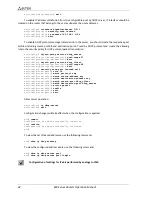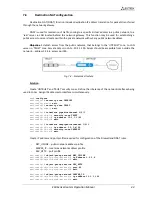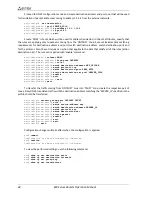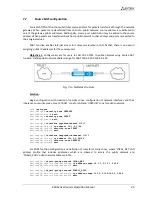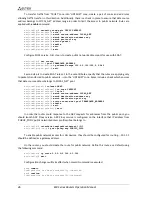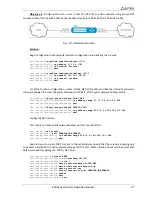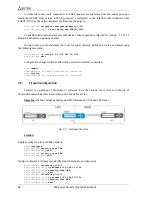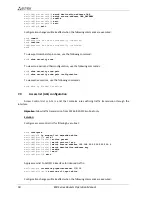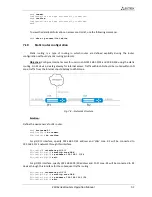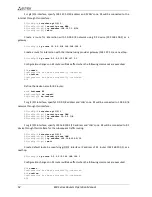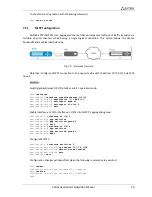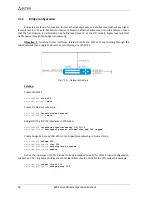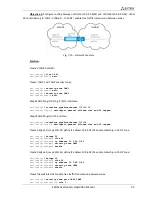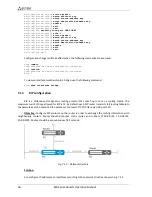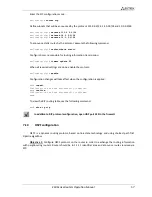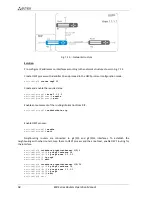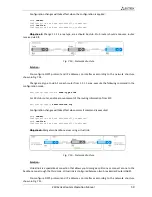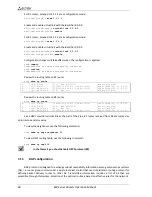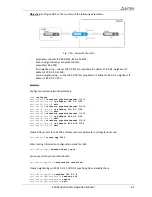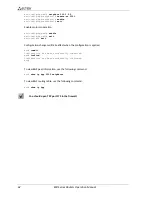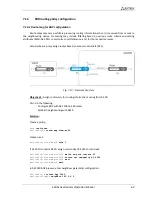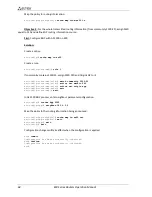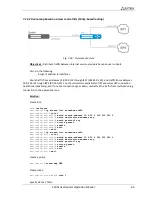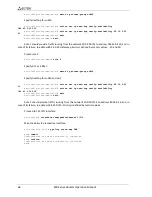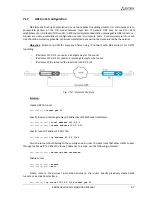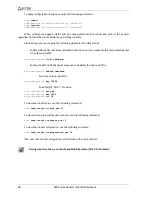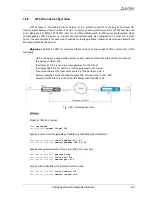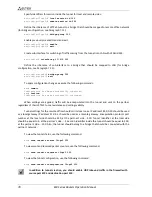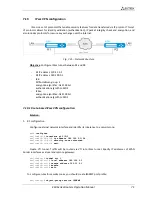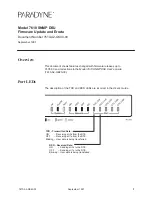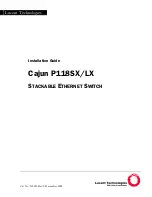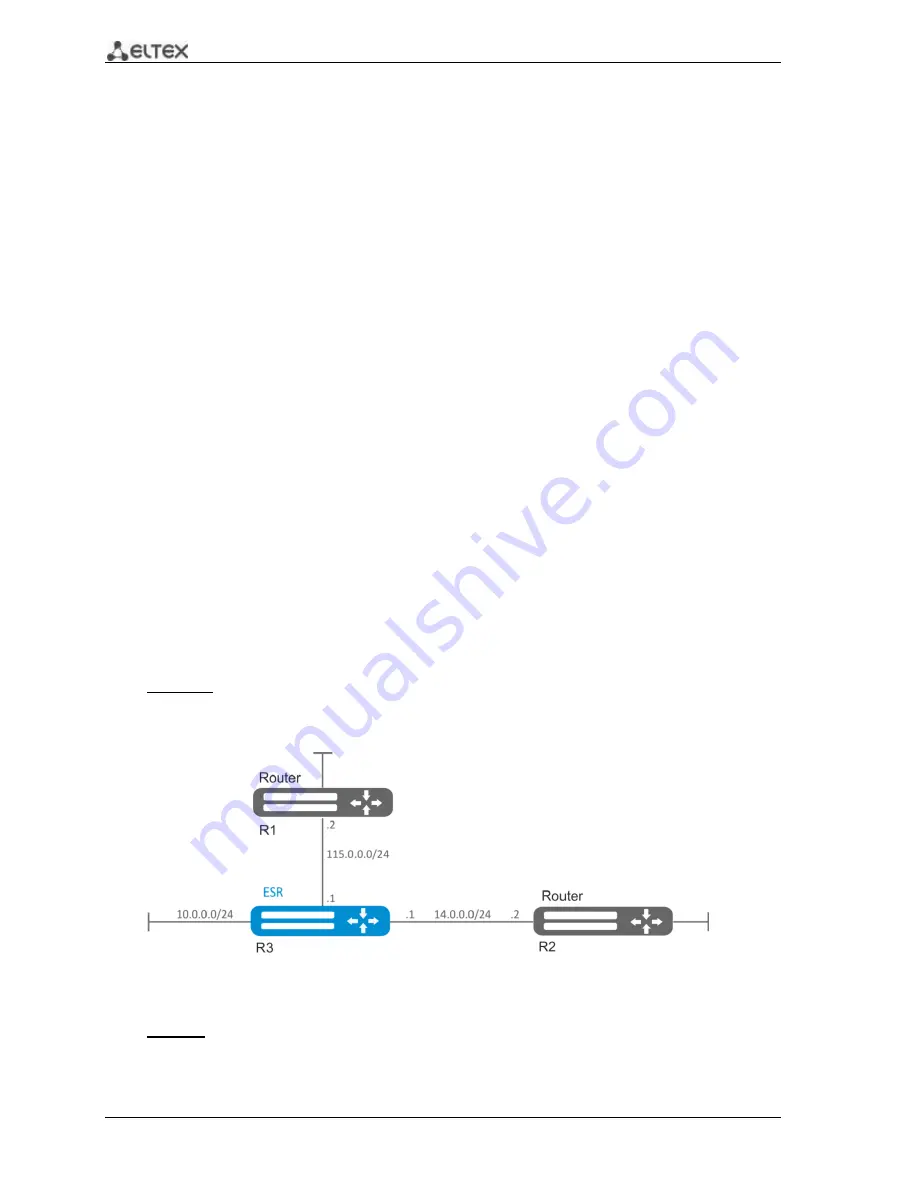
56
ESR Series Routers Operation Manual
esr(config-zone-rule)#
action permit
esr(config-zone-rule)#
match protocol any
esr(config-zone-rule)#
match source-address any
esr(config-zone-rule)#
match destination-address any
esr(config-zone-rule)#
enable
esr(config-zone-rule)#
exit
esr(config-zone-pair)#
exit
esr(config)#
security zone-pair LAN2 LAN1
esr(config-zone-pair)#
rule 1
esr(config-zone-rule)#
action permit
esr(config-zone-rule)#
match protocol any
esr(config-zone-rule)#
match source-address any
esr(config-zone-rule)#
match destination-address any
esr(config-zone-rule)#
enable
esr(config-zone-rule)#
exit
esr(config-zone-pair)#
exit
esr(config)# exit
Configuration changes will take effect when the following commands are executed:
esr#
commit
Configuration has been successfully committed
esr#
confirm
Configuration has been successfully confirmed
esr#
To view an interface membership in a bridge, use the following command:
esr#
show interfaces bridge
7.13
RIP configuration
RIP is a distance-vector dynamic routing protocol that uses hop count as a routing metric. The
maximum count of hops allowed for RIP is 15. By default, each RIP router transmits full routing table into
the network every 30 seconds. RIP operates at 3rd level of TCP/IP stack via UDP port 520.
Objective:
Configure RIP protocol on the router in order to exchange the routing information with
neighbouring routers. Router should announce static routes and subnets 115.0.0.0/24, 14.0.0.0/24,
10.0.0.0/24. Routes should be announced each 25 seconds.
Fig. 7.12
—
Network structure
Solution:
Pre-configure IP addresses on interfaces according to the network structure shown in Fig. 7.12.

